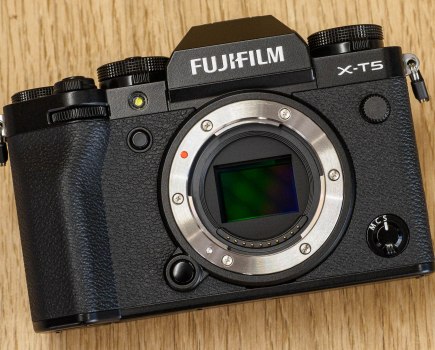Niraj Tanna, a photographer at UK agency Ikon Pictures, today told Amateur Photographer (AP) that a seven-page letter sent by his lawyer to the Duke and Duchess of Cambridge’s legal team outlines all that he plans to say on the matter.
The furore centres on an incident that took place in London’s Battersea Park on 23 September.
Tanna says he did not manage to take any photos of the Prince at the time, or pursue him or his nanny, but was spotted by a royal protection officer who spoke to the photographer while he was sat on a park bench with a camera in his bag.
Tanna’s law firm, Lewis Silkin, claims that suggestions the photographer was harassing the Prince and causing him distress are ‘unsustainable’.
‘Prince George is by far the most high-profile infant in the world,’ states the lawyer’s letter, a copy of which has been seen by AP.
‘His public appearances have already been numerous and countless photographs have been taken of him, not just in the UK but abroad, and thousands of those photographs have been published by the media worldwide with your client’s apparent consent.’
In a statement issued yesterday (see below) Kensington Palace accuses Tanna of ‘placing Prince George under surveillance and monitoring his daily routines for a period of time’.
The Palace adds: ‘No parent would tolerate the suspicion of someone pursuing and harassing their child and carer whilst their child is playing in a public park or going about their daily activities.’
Tanna’s lawyer says the allegations are ‘wholly without foundation’.
The photographer admits he took pictures of the Prince and his nanny in Battersea Park on a previous occasion, 16 July, and that a colleague took a set of photos in the same park on 27 August.
He says none of these pictures were published in the UK, though they were overseas.
However, Tanna’s lawyer claims: ‘On neither occasion was the Prince or his nanny aware of the presence of the photographer.
‘Further, the lack of complaint by your clients following either the taking or publication of these images attests to the fact that no harm was caused.’
The photographer has vowed to continue taking photos that are in the ‘public interest’.
‘Our clients is… not willing to cease conduct which has as its object the taking of photographs of Prince George or [his nanny] while they are in public places.’
Tanna insists he has not breached any laws on privacy, or infringed the code of conduct set out by the new UK press watchdog, the Independent Press Standards Organisation (IPSO).
Clause 4 of the IPSO code, which deals with harassment, states: ‘Journalists must not engage in intimidation, harassment or persistent pursuit.’
They must not persist in ‘questioning, telephoning, pursuing or photographing individuals once asked to desist, nor remain on their property when asked to leave and must not follow them’.
Clause 6, on children, says: ‘A child under 16 must not be interviewed or photographed on issues involving their own or another child’s welfare unless a custodial parent or similarly responsible adult consents.’
In an email to AP today, Tanna said he would not be making any further comment.
Kensington Palace’s statement, in full, released in response to an article in the Evening Standard yesterday:
‘The Duke and Duchess have taken legal steps to ask that an individual ceases harassing and following both Prince George and his Nanny as they go about their ordinary daily lives.
An incident last week has prompted Their Royal Highnesses to seek reasonable assurances from the individual about his behaviour.
The individual was spotted at a central London Park in the vicinity of Prince George, who was removed from the Park immediately.
There is reason to suspect that the individual may been placing Prince George under surveillance and monitoring his daily routines for a period of time.
The Duke and Duchess understand the particular public role that Prince George will one day inherit but while he is young, he must be permitted to lead as ordinary a life as possible.
No parent would tolerate the suspicion of someone pursuing and harassing their child and carer whilst their child is playing in a public park or going about their daily activities.’







